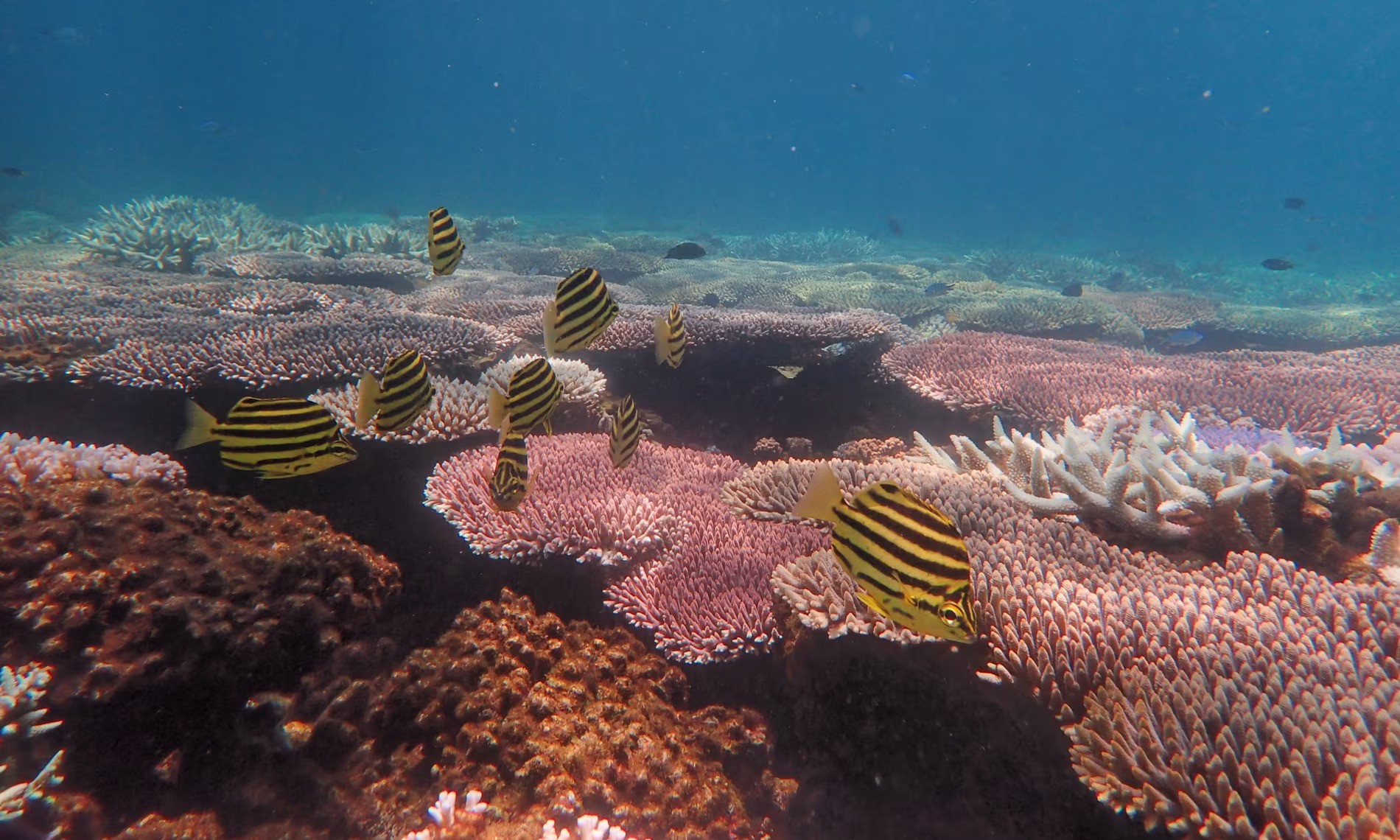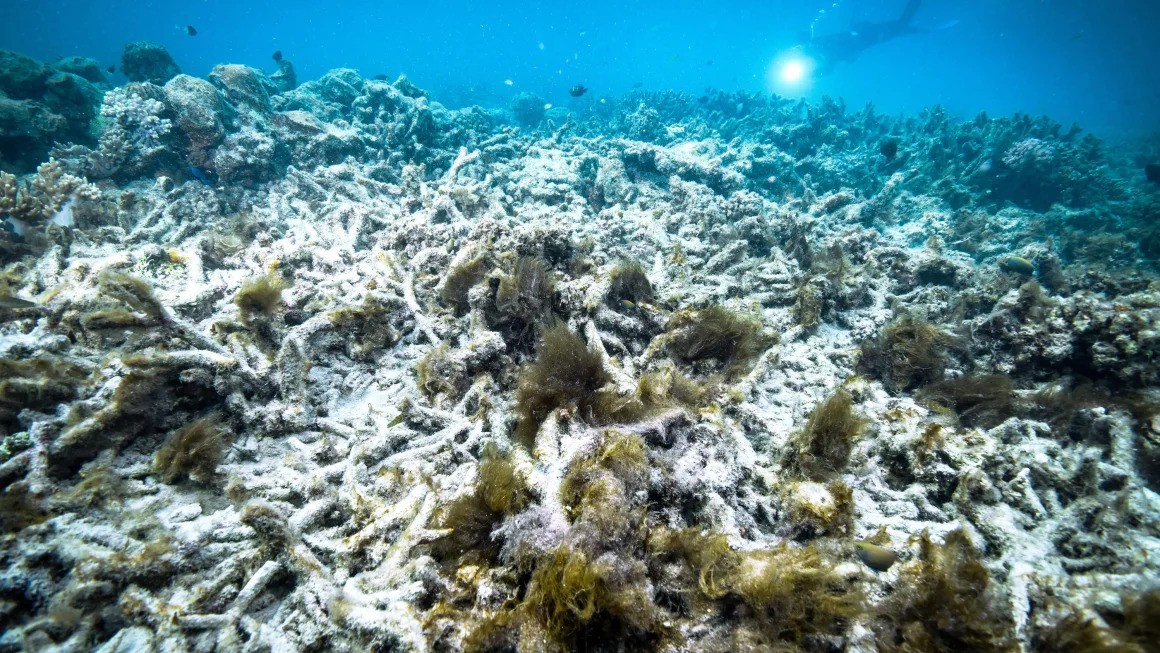Australia's Great Barrier Reef Faces Extensive Coral Bleaching
Australia's great barrier reef faces extensive coral bleaching, raising fears of a seventh mass bleaching event. On Wednesday, managers of the southern Great Barrier Reef reported extensive coral bleaching caused by heat stress in this ecologically crucial area.
Author:Hajra ShannonReviewer:Paula M. GrahamMar 01, 202466 Shares22.1K Views

Australia's great barrier reef faces extensive coral bleaching, raising fears of a seventh mass bleaching event. On Wednesday, managers of the southern Great Barrier Reef reported extensive coral bleaching caused by heat stress in this ecologically crucial area.
Aerial surveys conducted over the past weekend by the Great Barrier Reef Marine Park Authority and the Australian Institute of Marine Science revealed widespread bleaching across all surveyed reefs. The surveys covered 27 inshore reefs in the Keppel Islands and Gladstone region, as well as 21 offshore reefs in the Capricorn Bunkers off the coast of southern Queensland.
Dr. Mark Read, the authority's director for reef health, said most coral surveyed "displayed some level of bleaching with white and fluorescent colonies observed in shallow reef areas."
Stretching across nearly 133,000 square miles (345,000 square kilometers), the Great Barrier Reef stands as the world’s largest coral reef system. It hosts over 1,500 fish species and 411 hard coral species, contributing significantly to the Australian economy and serving as a major attraction for international tourists.
However, the escalating ocean temperatures are triggering widespread bleaching events on the reef, fueled by the ongoing use of fossil fuels. The current El Niño phenomenon, characterized by warmer-than-average sea-surface temperatures, is exacerbating the situation further, marking one of the most intense occurrences on record.
Bleaching occurs when stressed corals expel algae from their tissues, leading to a loss of their primary food source. Prolonged exposure to elevated water temperatures can result in coral starvation and death, causing them to turn white as their carbonate skeletons are exposed.
The managers of the Great Barrier Reef intend to expand their aerial and in-water surveys throughout the entire reef in the upcoming weeks. Although the southern section is experiencing the most severe effects, reports of bleaching have been received from all other areas within the marine park.
“„Aerial surveys are an ideal tool to assess the spatial extent of bleaching, but we need to go under the water to understand more about the severity of bleaching and how deep the bleaching extends.- Dr. Neal Cantin, senior research scientist with the Australian Institute of Marine Science
Reporters who visited the Great Barrier Reef two weeks ago witnessed bleaching at the southernmost coral cay, Lady Elliot Island, and on four distinct outer reefs near Cairns, located in the middle section of the reef. Additionally, a separate report from a team at James Cook University documented areas of moderate to severe coral bleaching around the Keppel Islands, where water temperatures exceeded the summer average.
"I have been working on these reefs for nearly 20 years and I have never felt the water as warm as this," said Dr. Maya Srinivasan, a scientist at the university's center for tropical water and aquatic ecosystem research, in a statementlast week.
"Once we were in the water, we could instantly see parts of the reef that were completely white from severe bleaching. Some corals were already dying."
Fears Of Seventh Mass-Bleaching
According to scientists, corals have the potential to recover if ocean temperatures stabilize.
"We have seen fish abundance decline as coral cover declines in this region following past impacts like this. But we have also seen the recovery of coral and fish communities on many areas of reef - there just needs to be enough time between impacts to allow this recovery to occur," Srinivasan said.
Elevated ocean temperatures led to severe mass bleaching incidents at the Great Barrier Reef in 2016, 2017, and 2020. Prior bleaching events occurred in 1998 and 2002. In 2022, another bleaching event occurred - the first during a La Niña event, which typically exerts a cooling effect - prompting significant concerns about the reef's future. There are apprehensions that 2024 may witness a seventh mass bleaching event.
“„While we must wait for official confirmation from the Marine Park Authority, it certainly looks like the seventh mass bleaching event is unfolding on the Great Barrier Reef, with reports of severe bleaching occurring along its length. We know that the climate crisis is driving marine heatwaves and leading to these bleaching events, but the frequency and scale at which they’re now occurring is frightening - every summer we’re holding our breath.- David Ritter, CEO of Greenpeace Australia Pacific
A historic marine heatwave "decimated" coral populations in Florida and the Caribbean last year, leading observers in Australia to fear a similar outcome for the country's reefs.
"What we're seeing in Florida and the wider Caribbean is a lesson of what's going to happen in the next 12 months as we see this thing rolling through now," Ove Hoegh-Guldberg, climatologist and chief scientist at the Great Barrier Reef Foundation, recently told reporters.
Last year, marked as the warmest year since global records began in 1850, according to the US National Oceanic and Atmospheric Administration’s (NOAA) annual climate report, witnessed ocean temperatures soaring to 100 degrees Fahrenheit (37 degrees Celsius) in certain regions, leading to the bleaching of entire reefs.
As water temperatures reached unprecedented levels, NOAA recently introduced three new levels to its alert system to address increasingly severe coral bleaching and elevated mortality rates. The newly added Alert Level 5, categorized as "near complete mortality," indicates that over 80% of corals in the highlighted area are at risk of dying due to prolonged high water temperatures.
Despite scientific evidence suggesting the likelihood of another mass bleaching event, last year, the UNESCO World Heritage Committee opted not to include the Great Barrier Reef on its list of sites "in danger."
Greenpeace's Ritter said that following the decision, "the Australian government promised to do everything it can to protect the Great Barrier Reef. This has to include addressing climate change as an existential threat to the reef, and ensuring our emissions reduction plans are aligned with a 1.5-degree pathway."
He added that "claims that Australia is taking the health of the Great Barrier Reef seriously ring hollow when we continue to expand and subsidize the coal and gas industry to the tune of billions every year."
According to the Coal Mine Tracker by the Australia Institute, the Labor government has authorized the establishment of four new coal mines or expansions since taking office in May 2022.

Hajra Shannon
Author

Paula M. Graham
Reviewer
Latest Articles
Popular Articles
